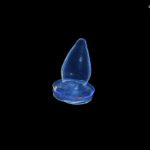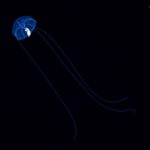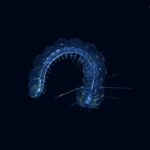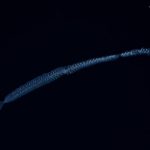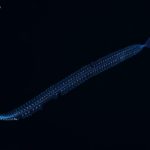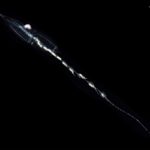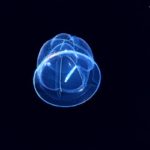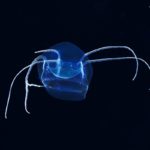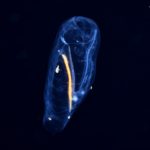The lights from the Big Island of Hawaii were but a distant flicker. Above, a curtain of stars reached from horizon to horizon casting their faint glow down towards the water. Below, nothing but the inky black darkness of the Pacific Ocean. All was unsettlingly quiet as the small dive boat from Jack’s Diving Locker bobbed in the water. It was time to make our final preparations for what was surely an insane dive idea. This was Pelagic Magic!
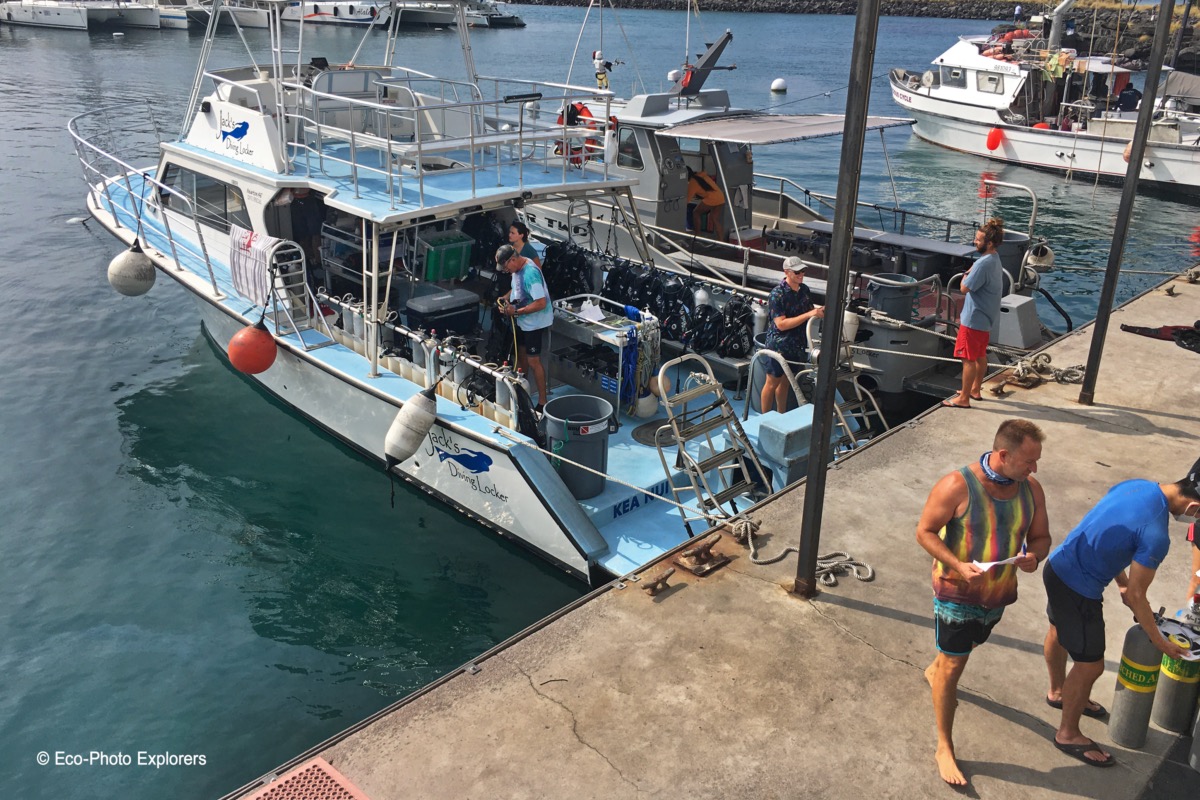
Jack’s Diving Locker in Kona, Hawaii, pioneered Black Water diving with their signature dive “Pelagic Magic”
Words & Photos by Michael Salvarezza and Christopher P. Weaver
The concept sounded simple back at the dive shop during the pre-dive orientation and briefing: motor out to a spot several miles offshore where the water is several thousand feet deep, drop some lines straight down into the dark water and then dive down to about 50 feet where we would hang motionless for the better part of an hour waiting for nighttime creatures to swim or drift by.
Confidence was high on dry land. But now, with thousands of feet of Pacific Ocean beneath the keel of the boat, there were plenty of nervous laughs and a growing sense of trepidation.
“Don’t worry,” said the Captain. “We haven’t lost one yet.”
Nothing like a little black humor to set the stage for a black water dive.
Within minutes, we took a giant stride off the stern, attached a clip on our BCs to a down line, and descended to the 50 foot level. Although this is truly a black water experience, there are lights in the water, used to attract microscopic zooplankton, and these helped ease the sense of disorientation. We also carried dive lights as well as strobe lights on our camera systems. Plenty of light!
Yeah, right.
It was only a few moments before the action began to heat up. This is a macro dive, with all eyes trained on the darkness of the abyssal water searching for tiny drifting organisms. Before long, we were transfixed as Salps and other planktonic life, shimmering worms, bioluminescent jellies and larval fish all floated by, sharing the stage for brief moments. Early on in our dive we encountered a Venus Girdle stretching several feet in length. Tiny octopi and squid drifted along later, searching for prey or protection. The only thing that is predictable about these dives is that what you will see will be weird and wonderful.
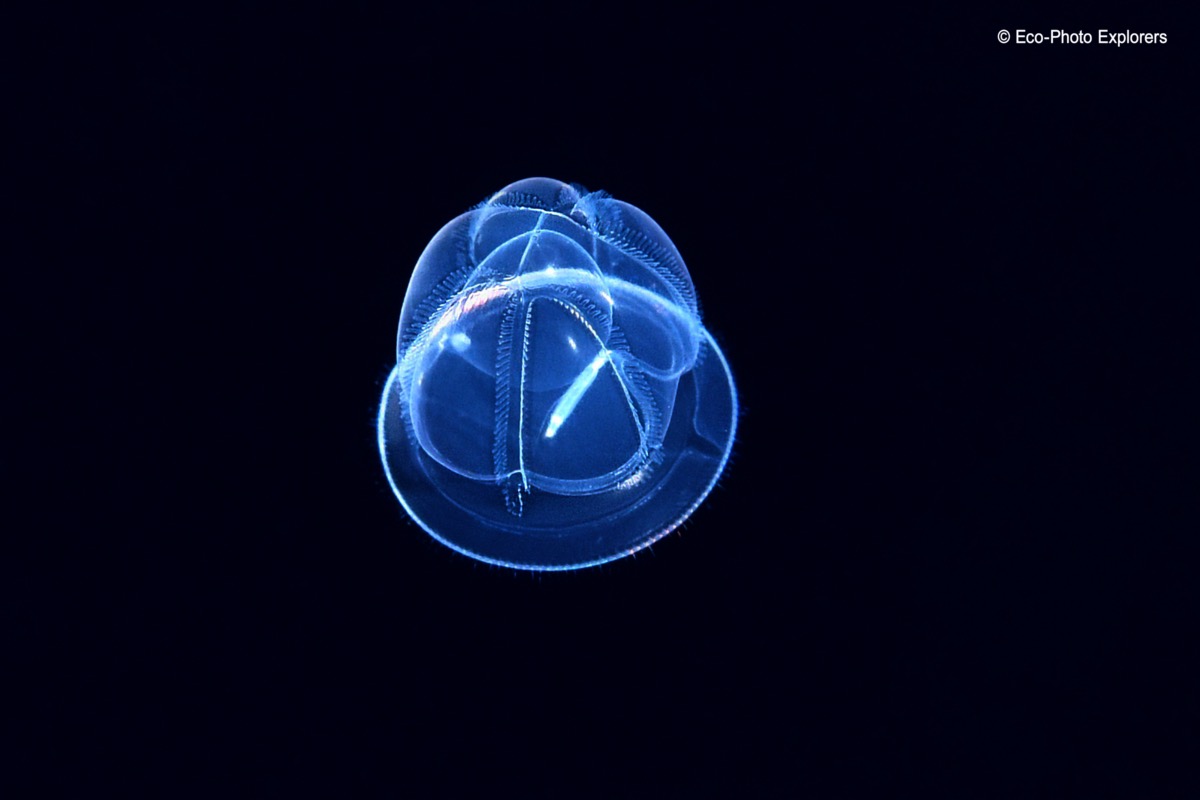
Small Comb Jellies appear out of the dark
Being tethered to the down lines help the divers stay above fifty feet and keep them from drifting off. The sense of disorientation dissipates pretty quickly. From a diving skills perspective, the best preparation is to be comfortable at night and to have sound buoyancy skills. Divers need to adjust to not being able to see the bottom for any kind of reference. And, even though the dives occur in groups, it becomes somewhat of an individual experience and very little communication takes place between buddies.
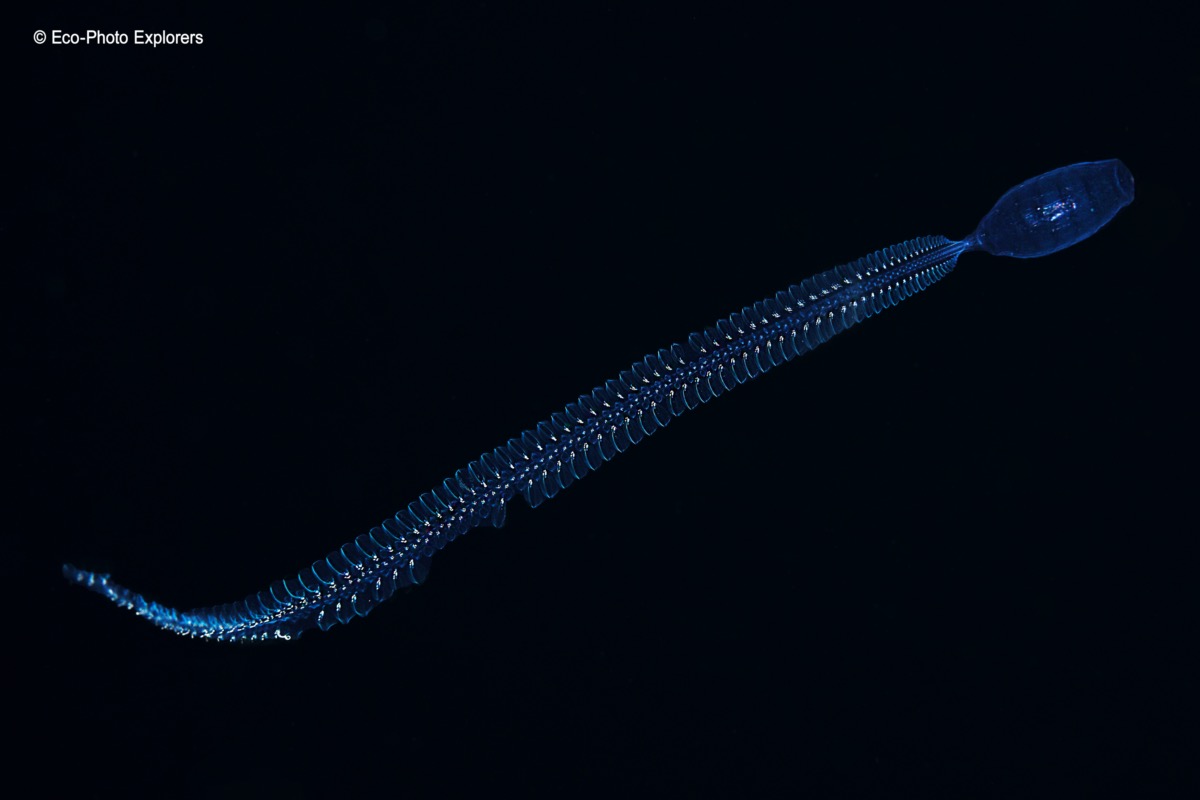
Nature’s beauty on full display
Photographing the tiny critters of the night is best accomplished with a macro setup for either your still image camera or your video system. For still images, a 60mm macro lens is ideal. A good starting point would be to adjust your ISO setting to 800 and your lens to f/18 or f/22 with a shutter speed of 125. A single strobe is sufficient and should be set to a low power setting: most of these creatures are translucent and the strobe will quickly overpower the subjects. In many cases, it is even best to shut the strobe off and use the light from dive lights to illuminate the subjects.
Focusing at night on tiny subjects that are in motion is difficult. Using auto-focus can result in quite a few lost opportunities as the camera spends too much time “hunting” for a focal point. It is often better, and less frustrating, to pre-focus your camera to a known point, perhaps two feet in front of the lens, and allow the action to drift into focus. The first few minutes of the dive are an ideal time to experiment to see what is working best in the situation. Don’t worry if you miss the first few shots. Don’t rush and don’t swim after the subjects. There will be plenty to see throughout the dive and there’s no need to chase…the action will drift towards you.
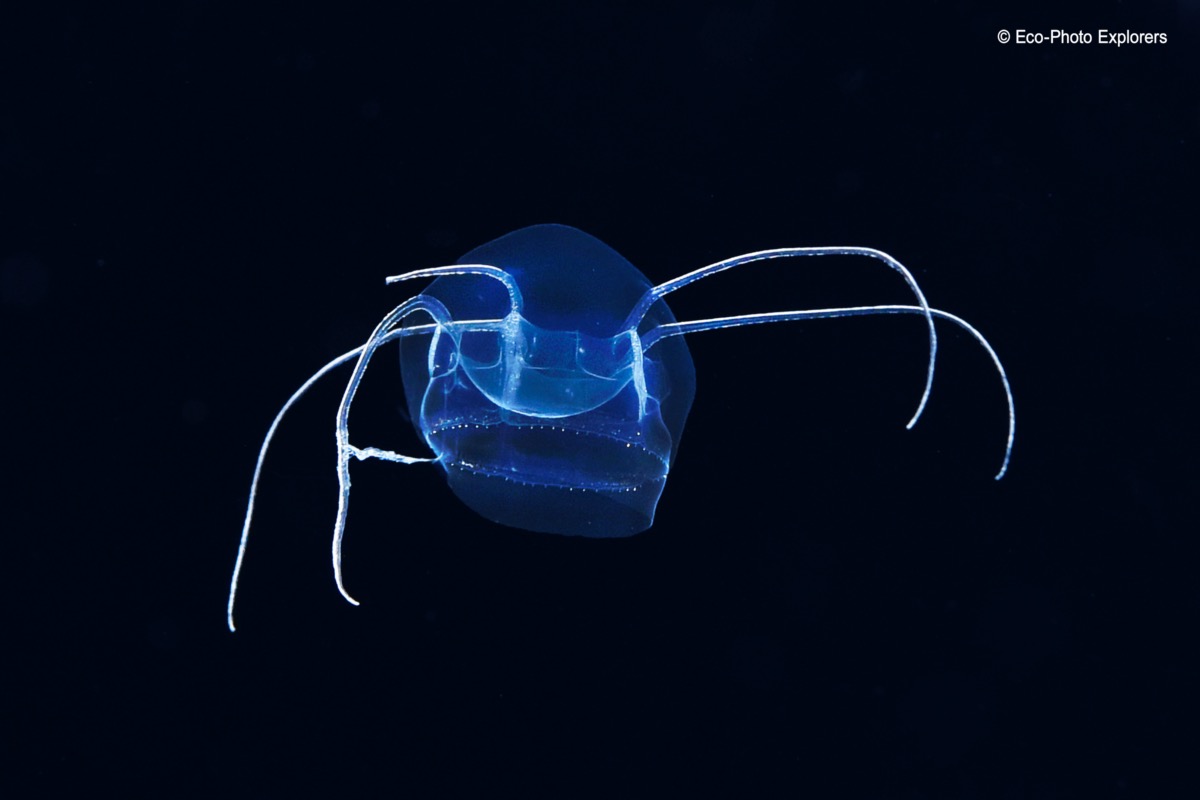
A spindly looking jellyfish
Our dive beneath the stars in the black water of the open Pacific Ocean ended all too quickly. The beauty and wonder of the rarely seen microscopic world of planktonic creatures immediately consumed us and any pre-dive jitters we had quickly disappeared. As we climbed aboard the dive boat the energy and enthusiasm was palpable and the divers each swapped stories of the strange things they had seen.
Suddenly, excited shouts came from the stern…a small Oceanic Whitetip Shark had cruised directly under the boat, perhaps attracted by the lights from the dive, and was swimming languidly into the distance.
They didn’t talk about that in the dive briefing!
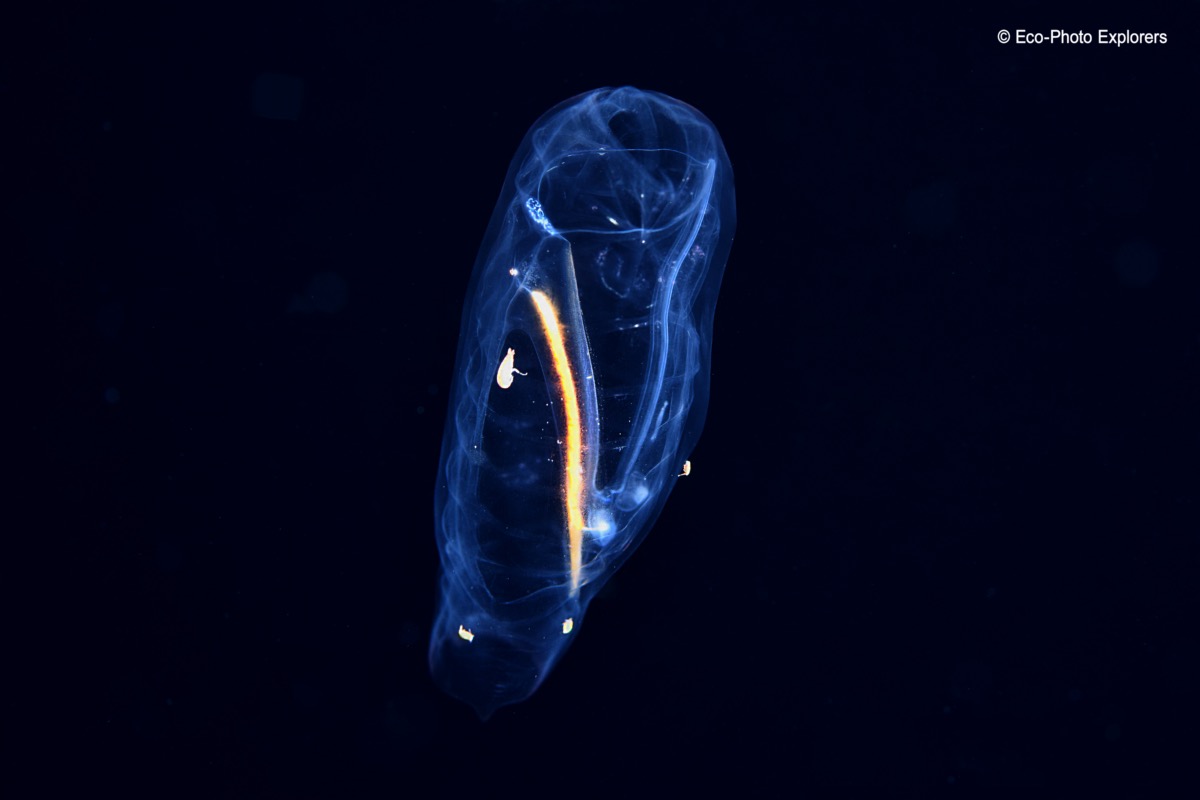
Tiny jelly-like creatures are home to even smaller creatures!
Jack’s Diving Locker in Kona, Hawaii pioneered this type of ocean adventure years ago with its Pelagic Magic dive. It is still the gold standard, but black water dives now regularly take place in such places as Anilao in the Philippines, Palau, Tahiti and even West Palm Beach in Florida.
So, next time you have the opportunity, take a deep breath and enter the world of black water diving. We assure you there are no night terrors here…just night pleasures!
RELATED STORIES:
Shorediving Hawaii: Maui’s Mala Wharf is one of Maui’s Best Scuba Dives
Whistling Death: Diving Hawaii’s Sunken Corsair Fighter Plane
Diving Hawaii’s Big Island With Kona Diving Company: An Exceptional Experience, Above And Below
Words & Photos by Michael Salvarezza and Christopher P. Weaver
- An odd looking creature tat resembles a space craft!
- This jellyfish was no more than an inch in length
- Many of the creatures are juveniles or larval forms of much larger organisms
- Strange creatures drift by in the dark of night
- Nature’s beauty on full display
- A zooplanktonic creature that resembles a shooting star
- Small Comb Jellies appear out of the dark
- A spindly looking jellyfish
- Tiny jelly-like creatures are home to even smaller creatures!
- Jack’s Diving Locker in Kona, Hawaii, pioneered Black Water diving with their signature dive “Pelagic Magic”

